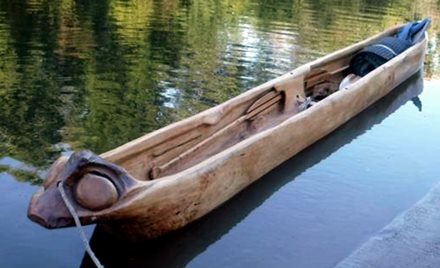
Siege of Thessalonica (II) |
year: 615 |
| Unsuccessful siege of the city by the Slavs | ★ ★ ★ ★ ★ |
|
enemy: Slavs
|
location: Modern Thessaloniki, Northern Greece
|
accuracy:
●●●●●
|
|
battle type: Siege |
war: Wars against Avars & Slavs |
modern country:
Greece |
| ▼ The Byzantines(emperor: Heraclius) | ▼ The Enemies | |
| Commander: | Unknown | Chieftain Chatzon |
| Forces: | Unknown | Unknown |
| Losses: |
| Background story: |
| In the 580s, a large movement of Slavs into the Balkans began. Avar raids along the Danube valley to the Black Sea somehow paved the way for the Slavs, and a large population of them, including 100,000 warriors, poured over into Thrace and Illyria. The Slavic invasion did not meet with much resistance at first. The Byzantine army was engaged in the east in a war with the Persians and the emperor Maurice could not gather many forces against the Avars and Slavs. He did this later, towards the end of the century, but he could not stop the descent of the Slavs. By the end of the 6th century the Slavs, in collaboration or instigated by the Avars, made catastrophic raids in the southern Balkans and had deserted Macedonia and Thrace. The only city that resisted them was Thessaloniki, which they besieged to no avail in 586 (or perhaps 597). They could not approach Constantinople because they had been repulsed by General Comentiolus, who was victorious against them in 584 and 585. The descent of the Slavs after their failure in Thessaloniki was diverted to the rest of Greece, while little by little their invasion began to turn from a large-scale invasion into relocation. Large areas of Greece were occupied by the Slavic tribes that did not recognize any authority: they were settling in Epirus, Thessaly, Attica, Evia and parts of the Peloponnese. They reached as far as the Cyclades and Crete! It seems that for the Slavs, Thessaloniki was an ardent desire, perhaps because it was the most civilized city they had met. In that period, they made repeated attempts to take it. One of them took place on October 27, 604, when according to the First Book of Narration of the Miracles of Saint Demetrius (Miracula Sancti Demetrii) written by the Archbishop of Thessaloniki Ioannes, 5000 Slavs who came suddenly from the sea with monoxyla (dugout canoes), tried to climb the walls that were unguarded as all the Thessalonians had rushed to extinguish the fire that had broken out in the church of Agios Dimitrios. But they were warned of the raid by an unknown and pious young man who appeared out of nowhere (Saint Demetrius), so everyone ran to the walls and the city was saved. |
The Battle: |
 Dugout canoe According to this narrative, a coalition consisting of many Slavic tribes arrived at the gates the city. Their leader was the chieftain Chatzon, who in the Byzantine sources is referred to as exarch of the Sclaveni which might have been a Byzantine title. The attack was by sea and by land. The Thessalonians successfully defended their city for the first 3 days. On the fourth day the Slavic fleet (of dugout canoes) was destroyed by a storm. The disaster was attributed to Agios Dimitrios. After that, the siege ended. Chatzon at one point wanted to negotiate and secretly entered the city and began talking to the lords, who saw an opportunity to benefit financially. But he was recognized by some women and the mob killed him. It is not clear if this happened before or after the siege ended. In this episode too the city’s governor was absent. When, at the end of the siege, the newly appointed Perfectus per Illiricum Charias came to the city, he was surprised to learn what had just happened. |
Aftermath: |
| The Slavs continued the raids and their settlement in other parts of the Balkans, in Macedonia and in Southern Greece. Moreover, the Slavic warlords turned to the khan of the Avars and convinced him of a joint attack by the Avars and Slavs against Thessaloniki which took place two years later, in 617. |
|
|
